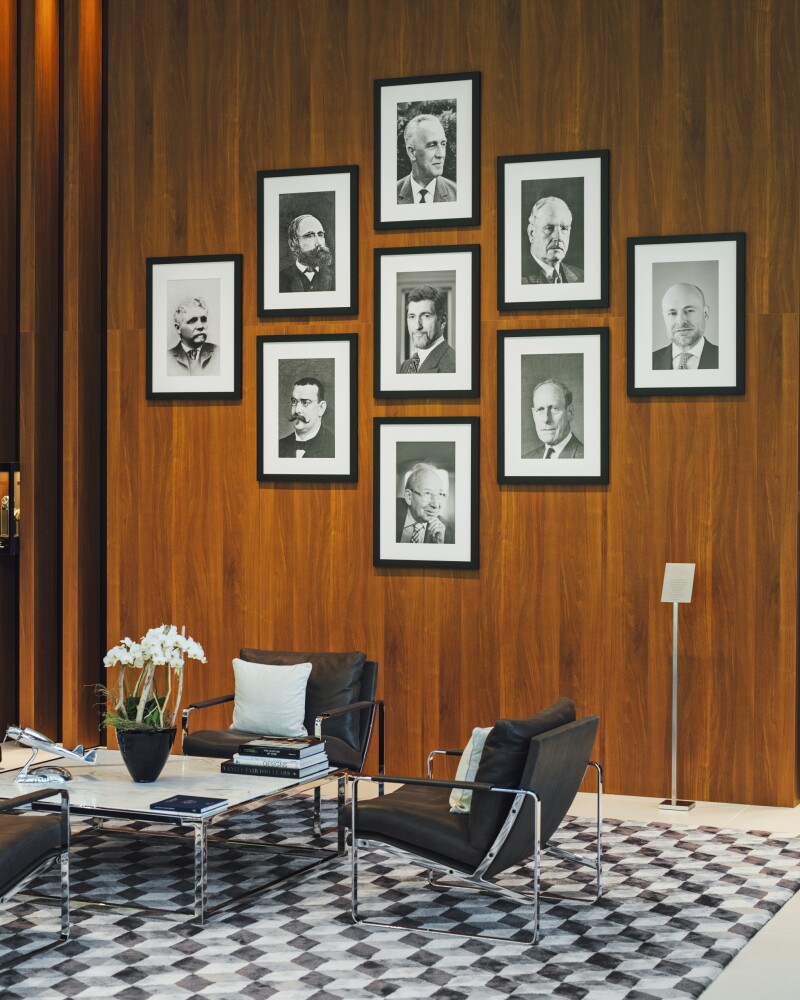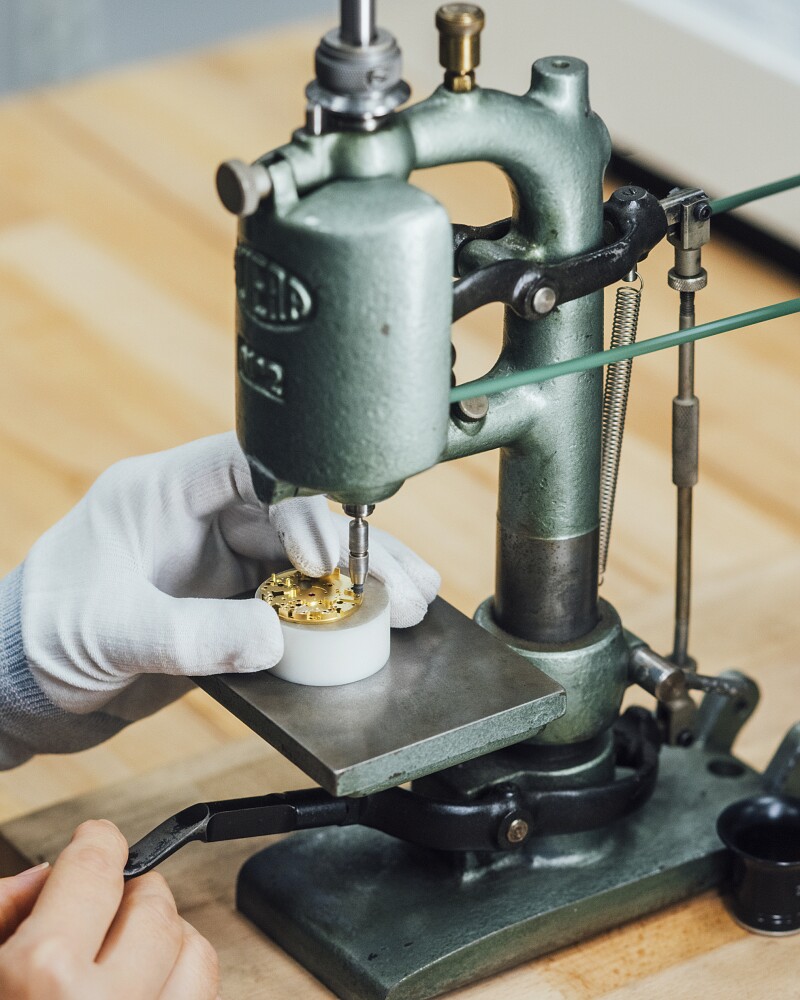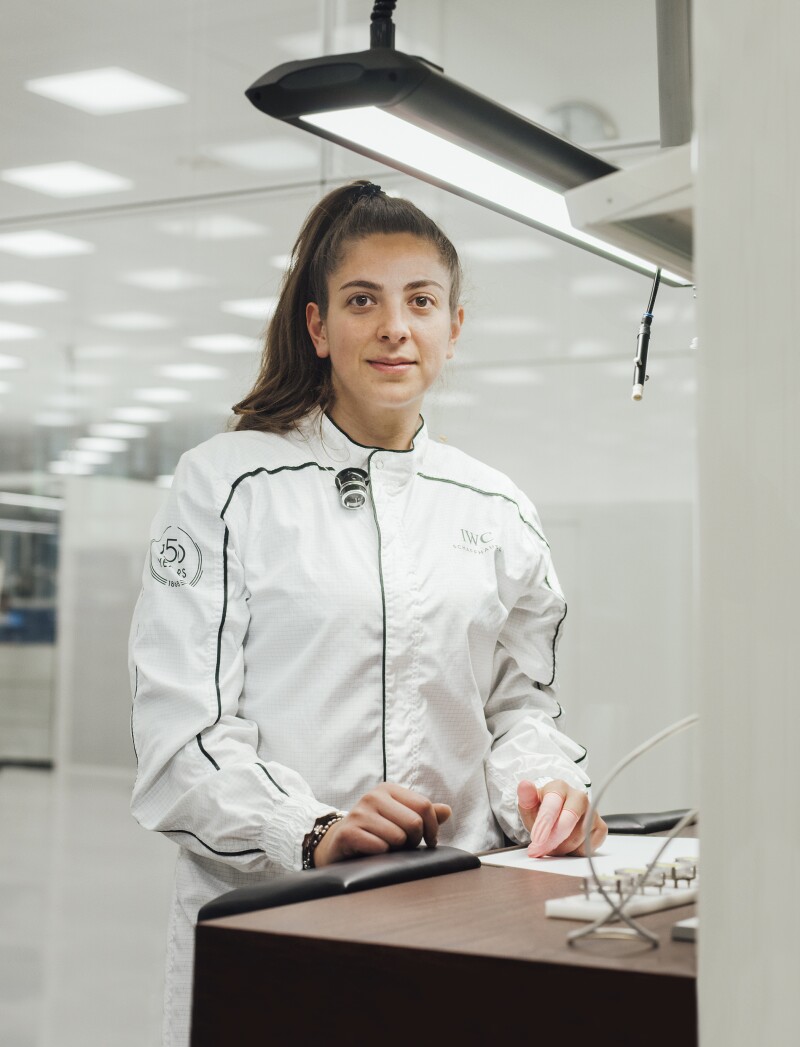Most travelers to the Swiss city of Schaffhausen go to explore the picturesque Old Town—a bastion of baroque, rococo, and late Gothic architecture on the Rhine River—or to see Rhine Falls, Europe’s largest waterfall, which is just a few miles south.
Watch lovers, however, may recognize the city of 36,000—a 40-minute train ride north of Zurich—as the home of the 151-year-old International Watch Company, or IWC. One of Switzerland’s venerable horological brands, IWC was founded in 1868 by Florentine Ariosto Jones, an American watchmaker eager to manufacture components for pocket watches using Swiss technology and the river’s hydropower. The company still maintains its headquarters in the stately riverside building Jones built seven years after arriving in Schaffhausen.
Located a short walk from the Old Town, the four-story HQ also houses the IWC Museum, where a chronological display of the company’s timepieces—beloved by watch connoisseurs for their elegant, minimalist aesthetic—offers an intriguing lens on Switzerland’s role in 20th-century history: Oversize wristwatches designed for pilots share space with a replica of a pocket watch gifted to Winston Churchill, along with a letter he wrote on February 21, 1945, thanking the company for “the very fine gold watch which you have so kindly given me for my 70th birthday.”

IWC timepieces are known for their elegant and minimalistic look.
Photo by Ériver Hijano
Travelers can book a full-day tour of the watchmaking operation, which begins at the museum before moving on to the main event: a visit to the $43 million manufacturing center, located on Schaffhausen’s outskirts, and opened last year to coincide with the watchmaker’s 150th anniversary.
Most Swiss watch brands secure their workshops like nuclear weapons labs. At the new facility, IWC is intent on doing the opposite. “We’re looking forward to welcoming 10,000 guests a year and giving them the in-depth experience of how our watches are made,” says CEO Christoph Grainger-Herr, a former architect who helped design the new building. It takes only 10 minutes to drive to the new factory from the city center, but when you see its soaring modernist frame, which rises from the countryside like a gleaming luxury yacht cresting a grass-green wave, you feel as if you’ve leapt centuries forward in time.
Visitors enter the two-story 145,000-square-foot facility through a high-ceilinged lobby composed of steel, glass, and concrete with light wood accents. The contemporary vibe belies the old-fashioned technology powering the company’s analog timepieces, represented in the entrance hall by a 30-foot-high model of IWC’s groundbreaking perpetual calendar wristwatch. The timepiece, which requires no adjustment until the year 2499, was created in 1985 by Kurt Klaus, the master watchmaker who, at age 84, continues to serve as a brand spokesperson.

The company’s headquarters sit in the same riverside location built more than 150 years ago.
Photo by Ériver Hijano
The next stop on the tour is the ground-level small-parts workshop, where computerized machines that resemble Brobdingnagian kitchen appliances carry out the bulk of IWC’s automated production. Machines here make some 1,500 parts out of brass, steel, and copper, including bridges, oscillating weights, levers, and springs—the tiny components that, working in unison, create and release enough energy to push the hands of a watch around the dial, or face, with reassuring precision. Once assembled, these parts are known as a movement or a caliber. Movements will eventually be fitted onto metal discs known as movement base plates, which are also made in the small-parts workshop. But first the plates will be shuttled to the decoration department, where engravers and stone setters adorn the metal discs using centuries-old artisanal techniques such as perlage, a process of creating a series of fine overlapping circles, or Côtes de Genève, grooves that give the appearance of vertical stripes. Even though these decorative elements embellish the insides of the watch, and may be visible only through a small crystal opening on the back, the amount of time devoted to their finishing helps explain why IWC watches retail from $4,600 to $220,000 (and even more for customized timepieces).
In the large movement-assembly room, automation gives way to manual labor. This is where all those hundreds of parts are put together—a job still too complex for computers. Before entering the vast space, workers must pass through a blindingly white changing salon that looks like something out of 2001: A Space Odyssey, where they don white shoes—Birkenstocks appear to be a favorite—and white lab coats. (Face powder is verboten—“because dust particles in the movement are a big enemy in watchmaking,” says tour guide Jutta Haeller.)

After passing through initial computerized construction, the watch-assembling process turns manual, where workers set stones and pins, engrave, and oil components of the piece.
Photo by Ériver Hijano
They then settle into one of the many stations on the assembly line (anywhere from 10 to 30, depending on the watch being produced). Each specialist wears a loupe strapped over one eye, pirate-style. As the movement makes its way down the line, each specialist painstakingly sets watch pins or oils components. It takes as many as 30 people to build even one beating heart, which may go on to power models such as the Portugieser, one of the brands’s most iconic timepieces. Meanwhile, a flurry of activity is taking place in the basement, where workers make the cases that will hold the finished movements by molding rods of metal—gold, steel, platinum, bronze, titanium, or a newfangled alloy known as ceratanium—into round or tonneau forms. Then the movements and cases are sent back to headquarters in central Schaffhausen, where employees fasten on hands and dials, mount the movements into cases, and prepare the watches for their final inspection. The last step? Attaching straps.
In a world where digital devices are favored, IWC has maintained its foothold by mixing its traditional technology with more modern designs, always with an eye to how those designs will weather the years. For example, the company’s new pilot’s watch, developed in partnership with wristwatch publication and e-commerce site Hodinkee, is a contemporary take on an TWC classic.
“For us not to be too fashionable but to stay at the forefront of innovation—it’s a careful balancing act,” Grainger-Herr says. “We’re in an industry dealing with eternity.”

Specialists wear a loupe strapped over one eye to complete watchmaking tasks too complex for computers to do.
Photo by Ériver Hijano
How to Visit the IWC Factory
Take a train from Zurich Main Station to Schaffhausen, usually a 40-minute ride, and walk 10 minutes to Baumgartenstrasse 15. IWC is open Monday through Friday, 9 a.m.–4 p.m. A full-day tour of IWC’s timekeeping operation begins at its city center headquarters. Visitors can register for tours—which include a guide, transfers, and gift bag—by emailing [email protected]. Museum and manufacture tour, 600 Swiss francs (about US$605) for up to 12 people. Individuals can join monthly tours held on select Fridays (dependent on bookings), 150 Swiss francs (about US$151) per person. >>Next: Vuarnet: France’s Most Iconic Sunglasses Are Making a Comeback











